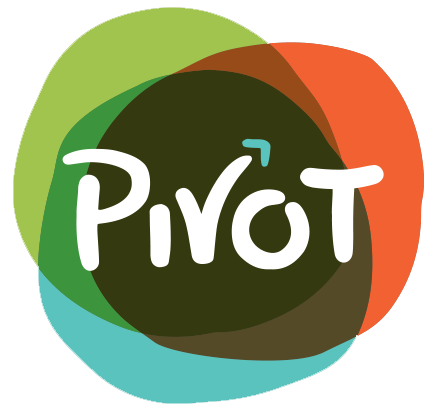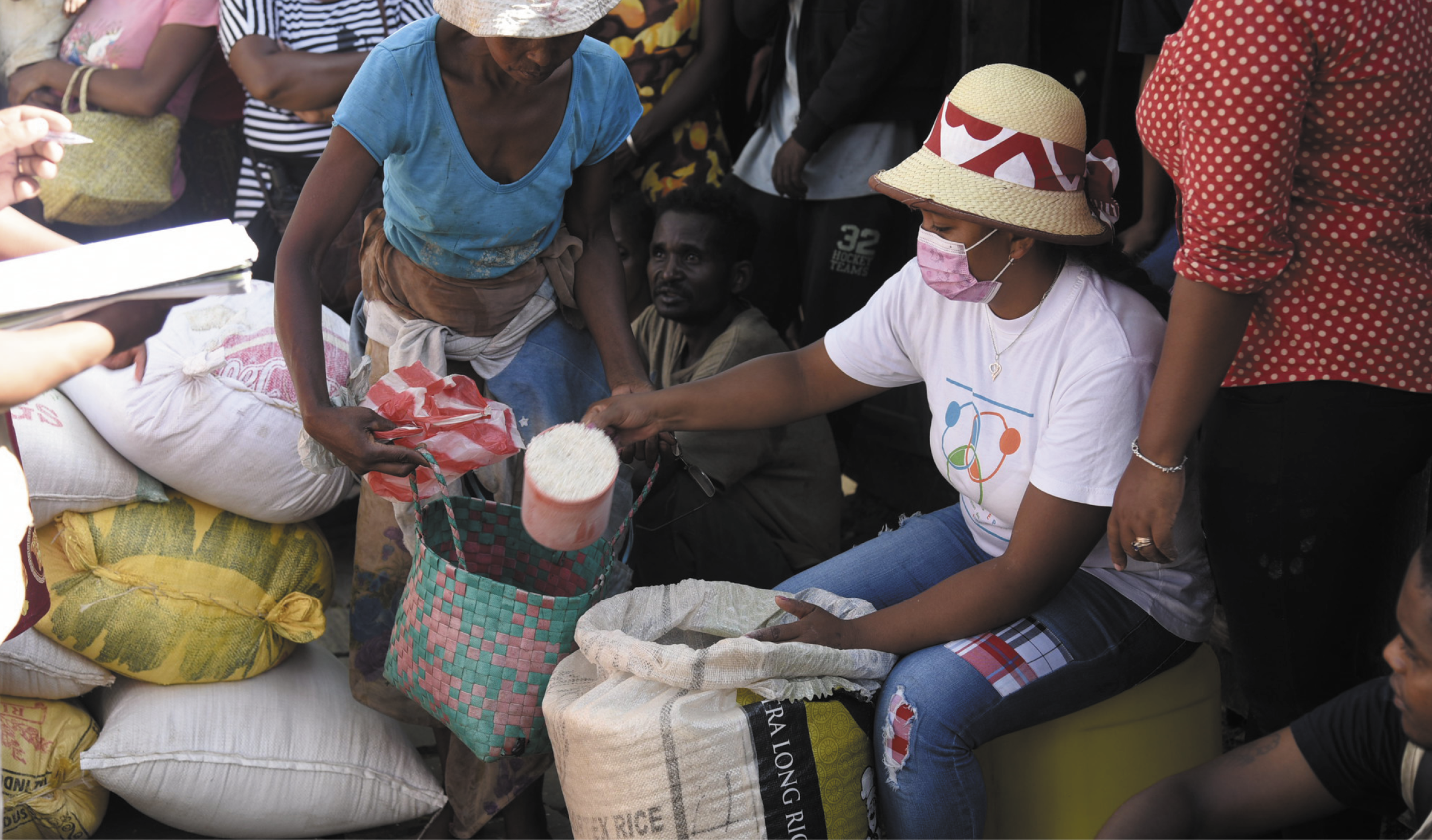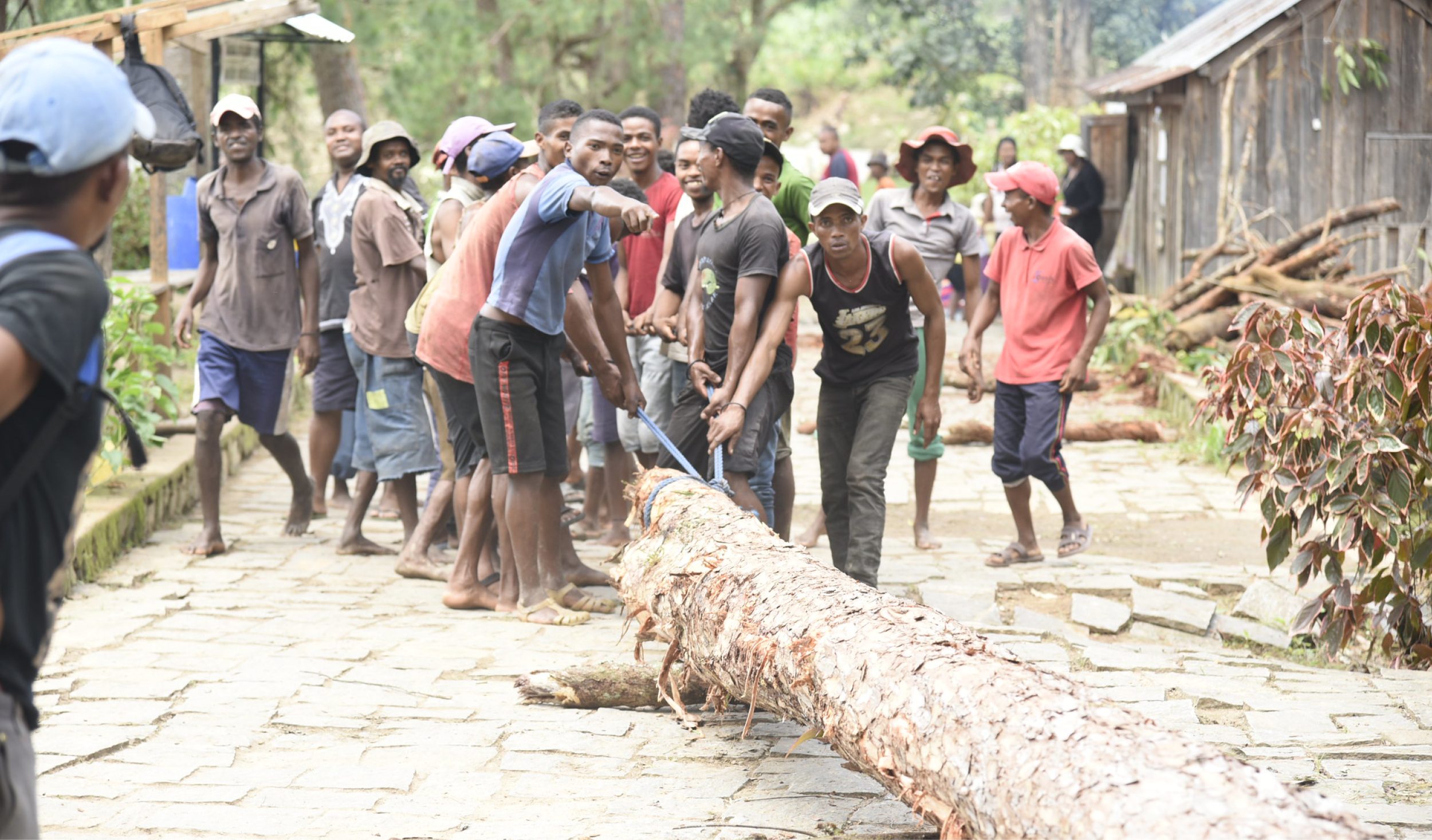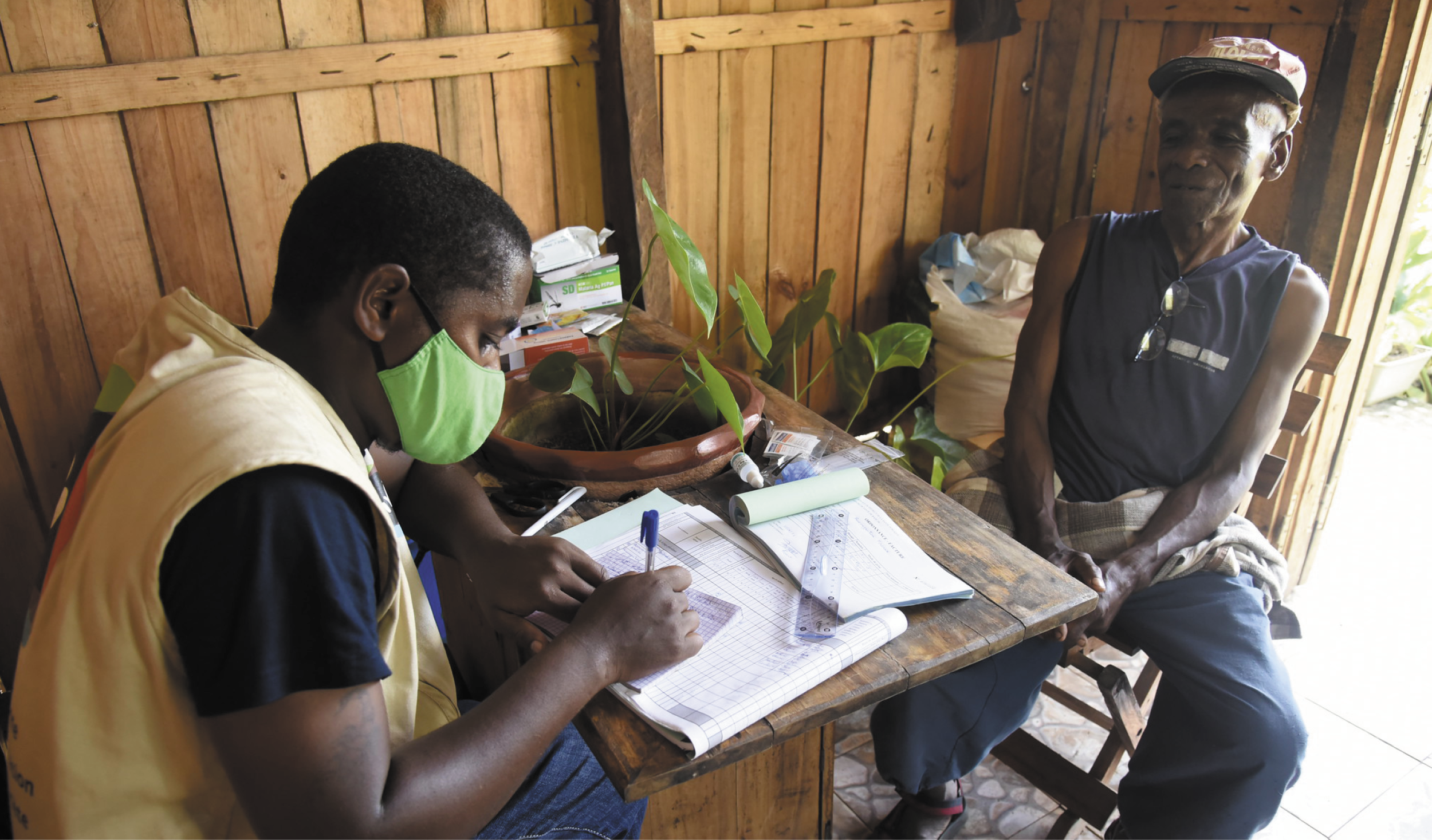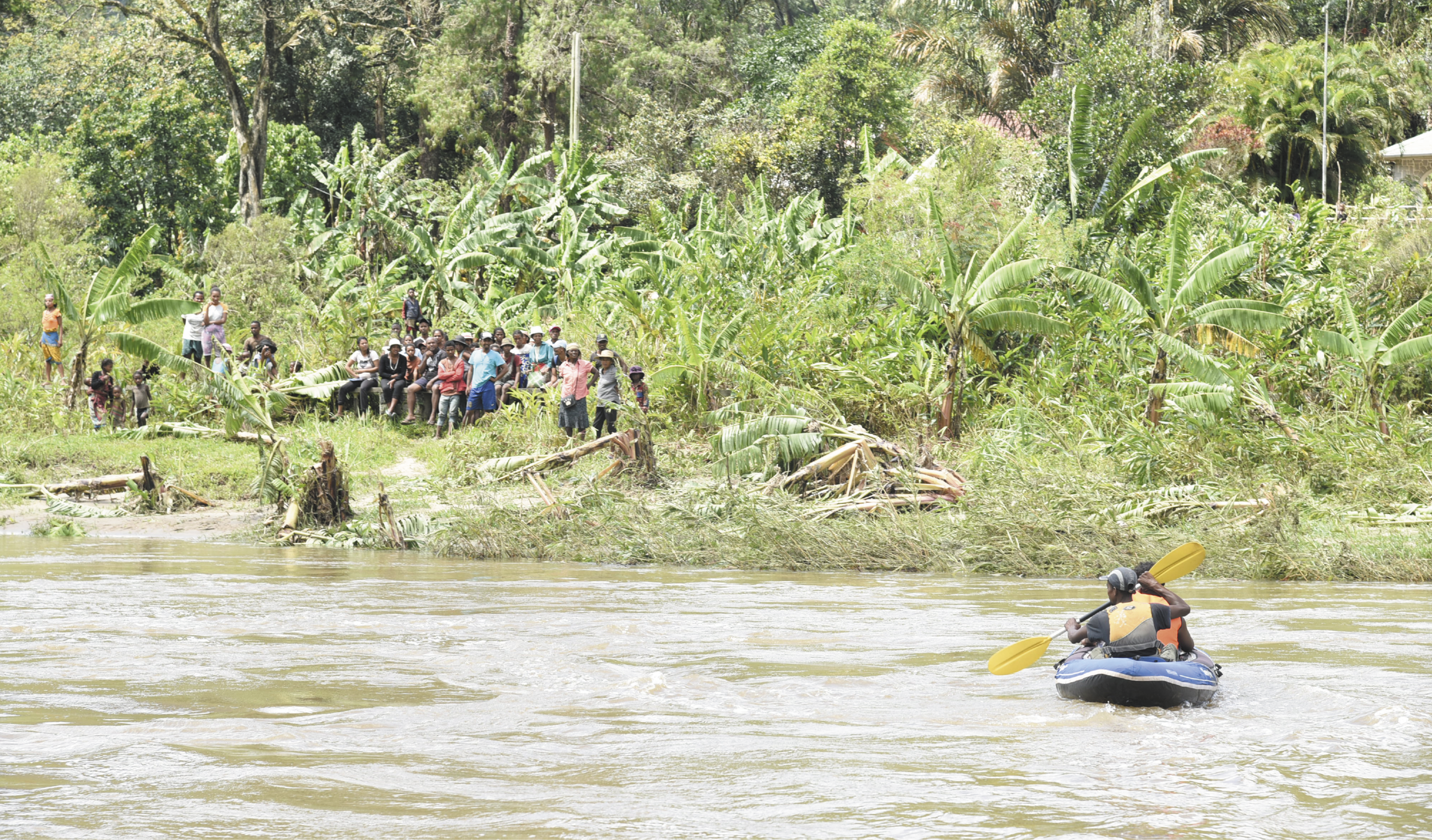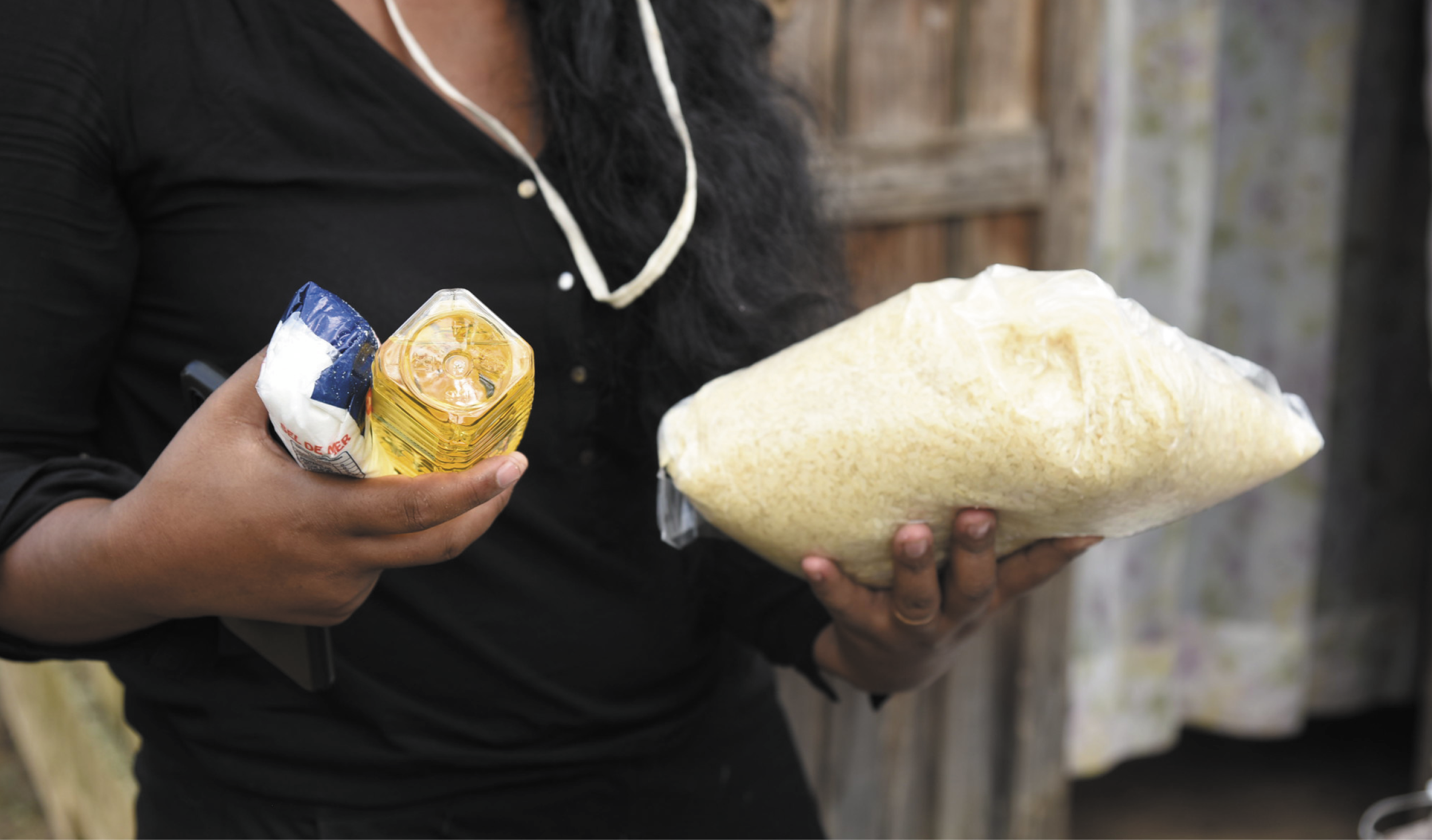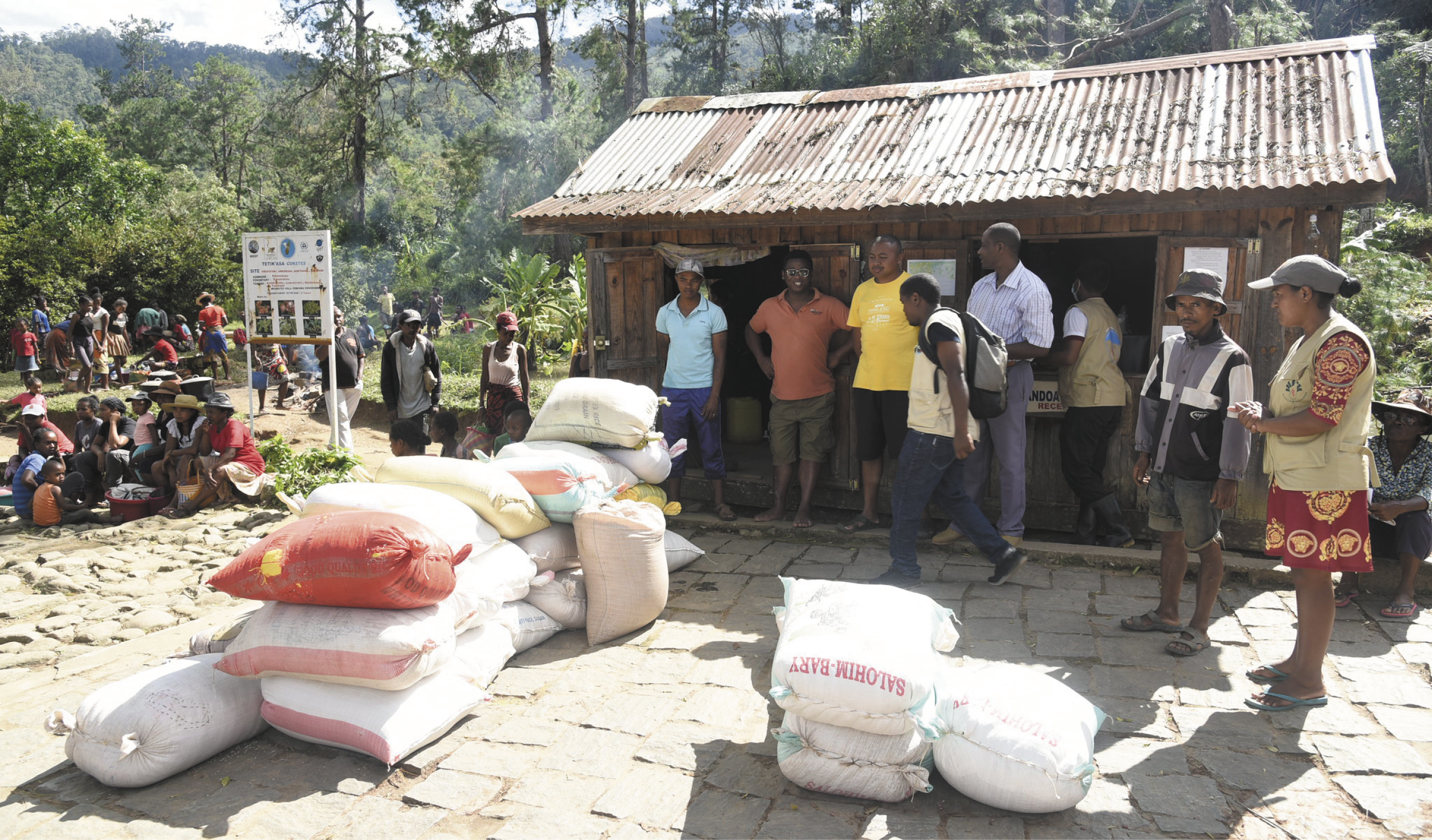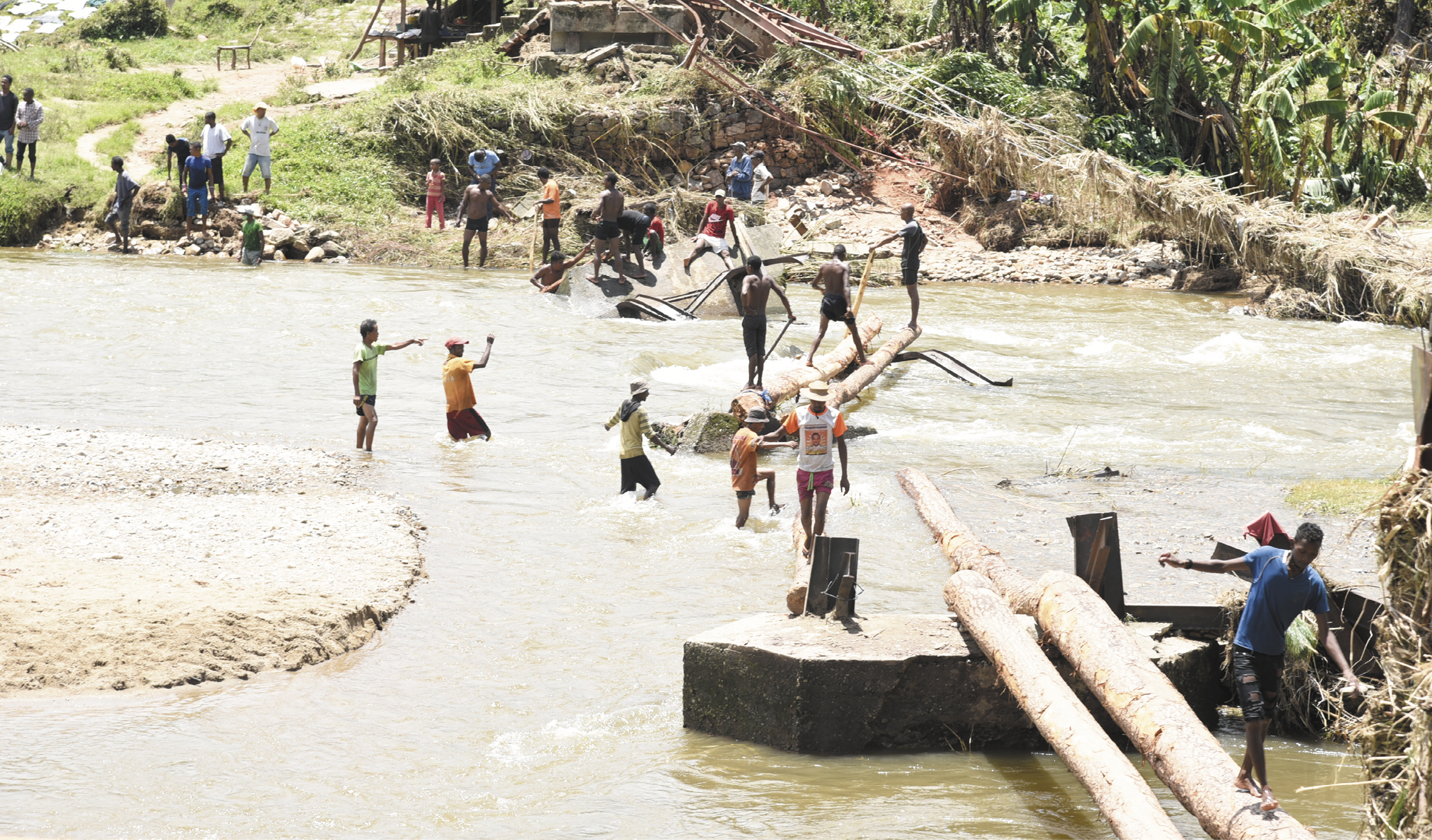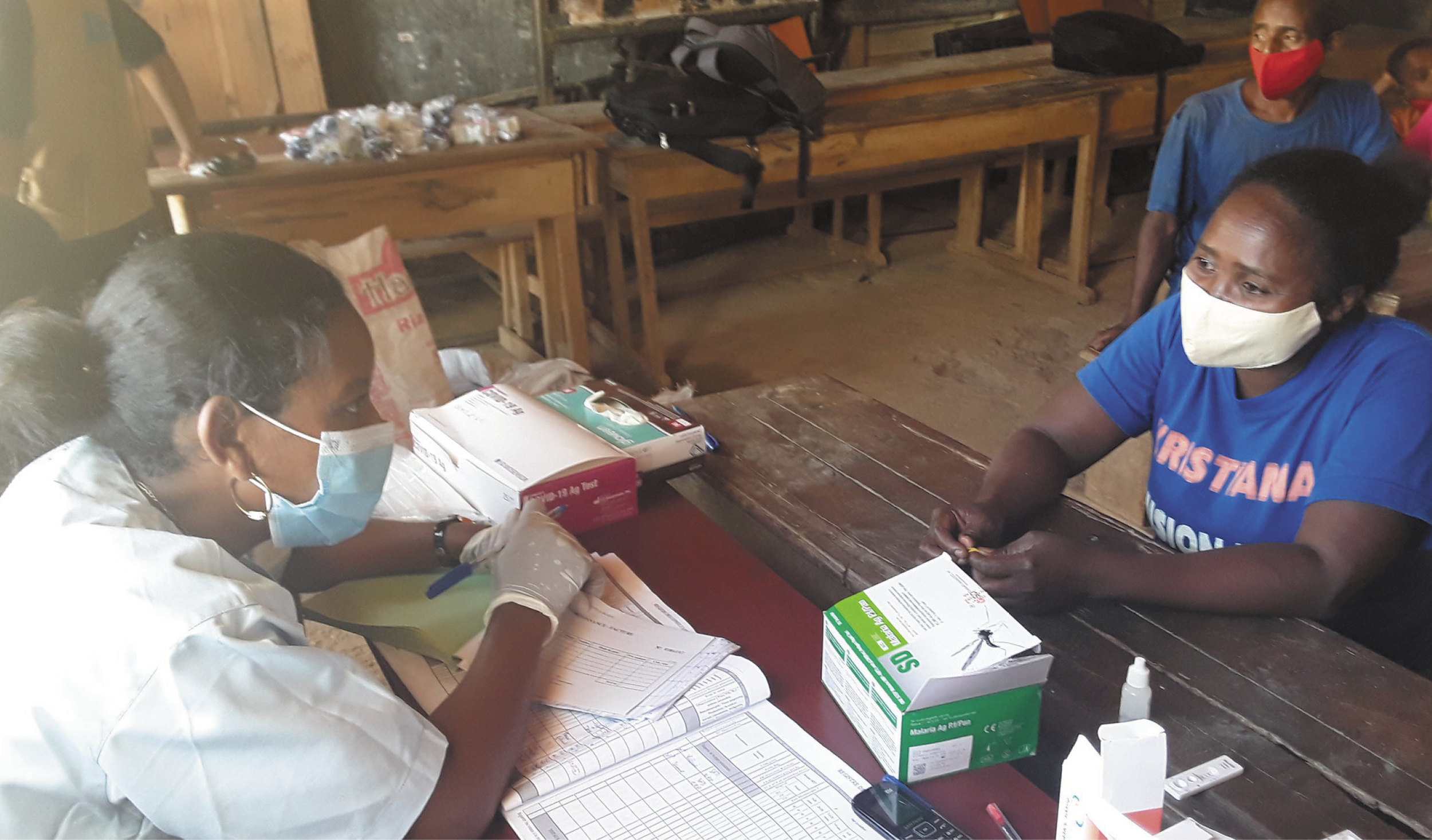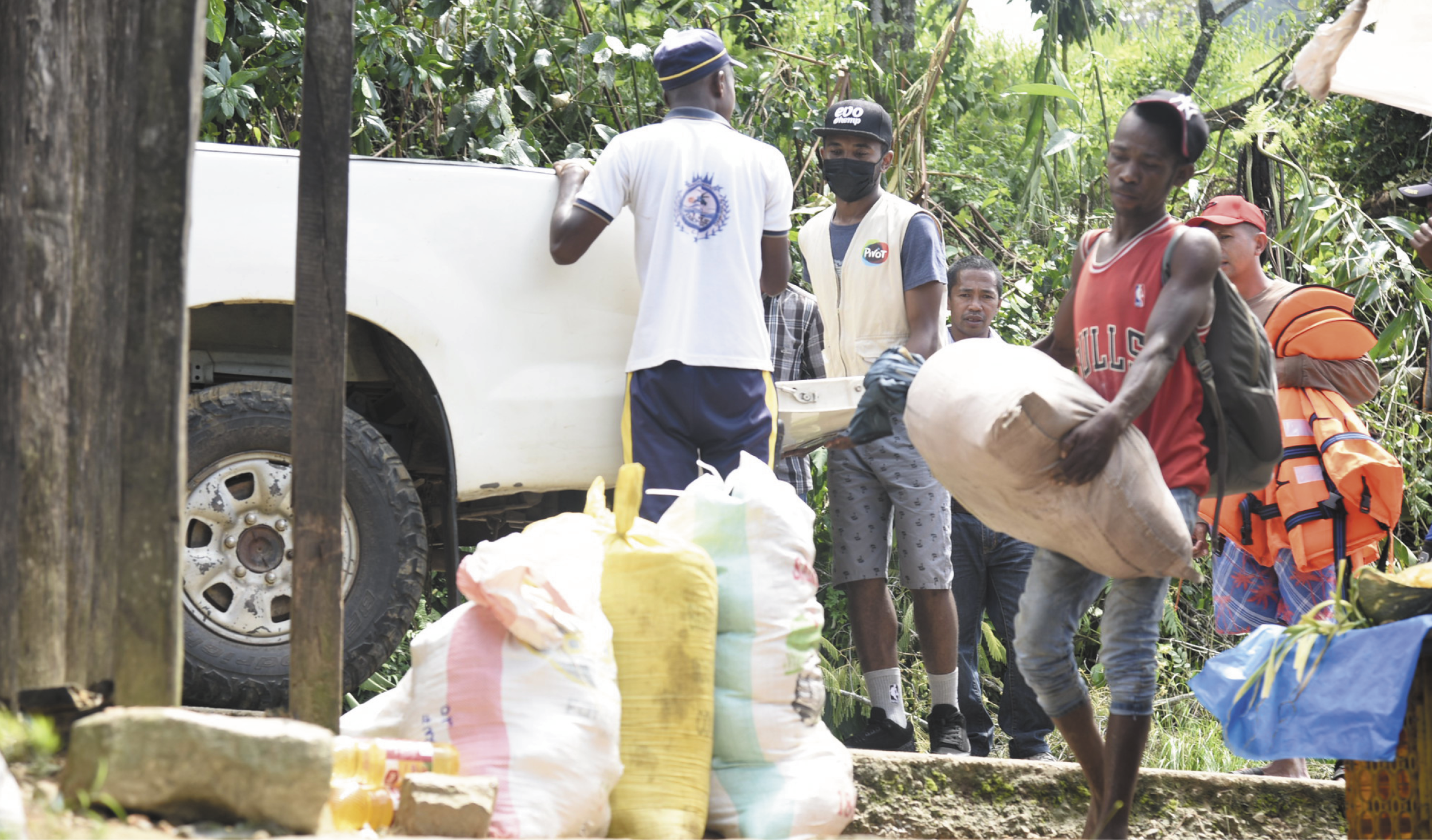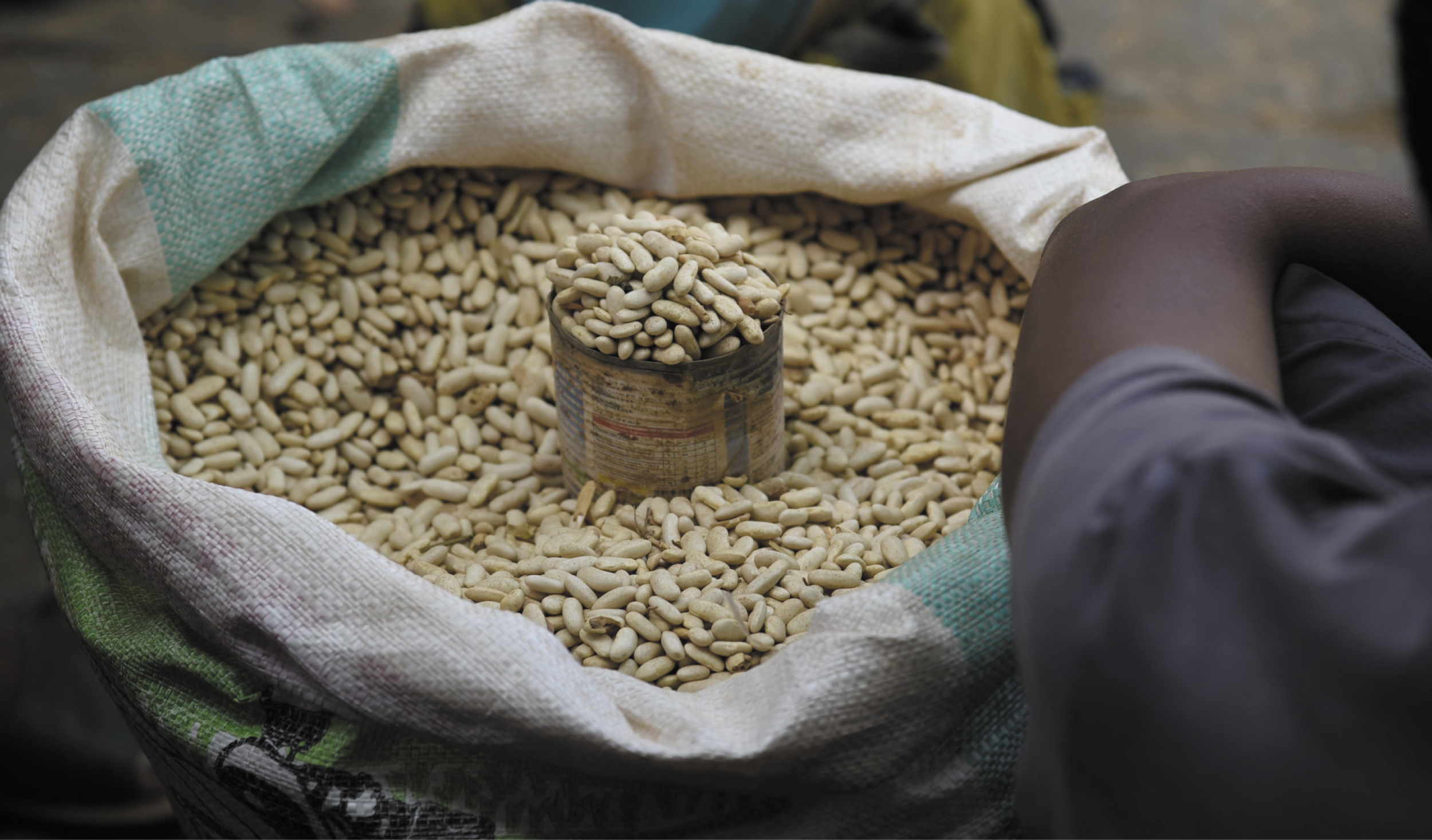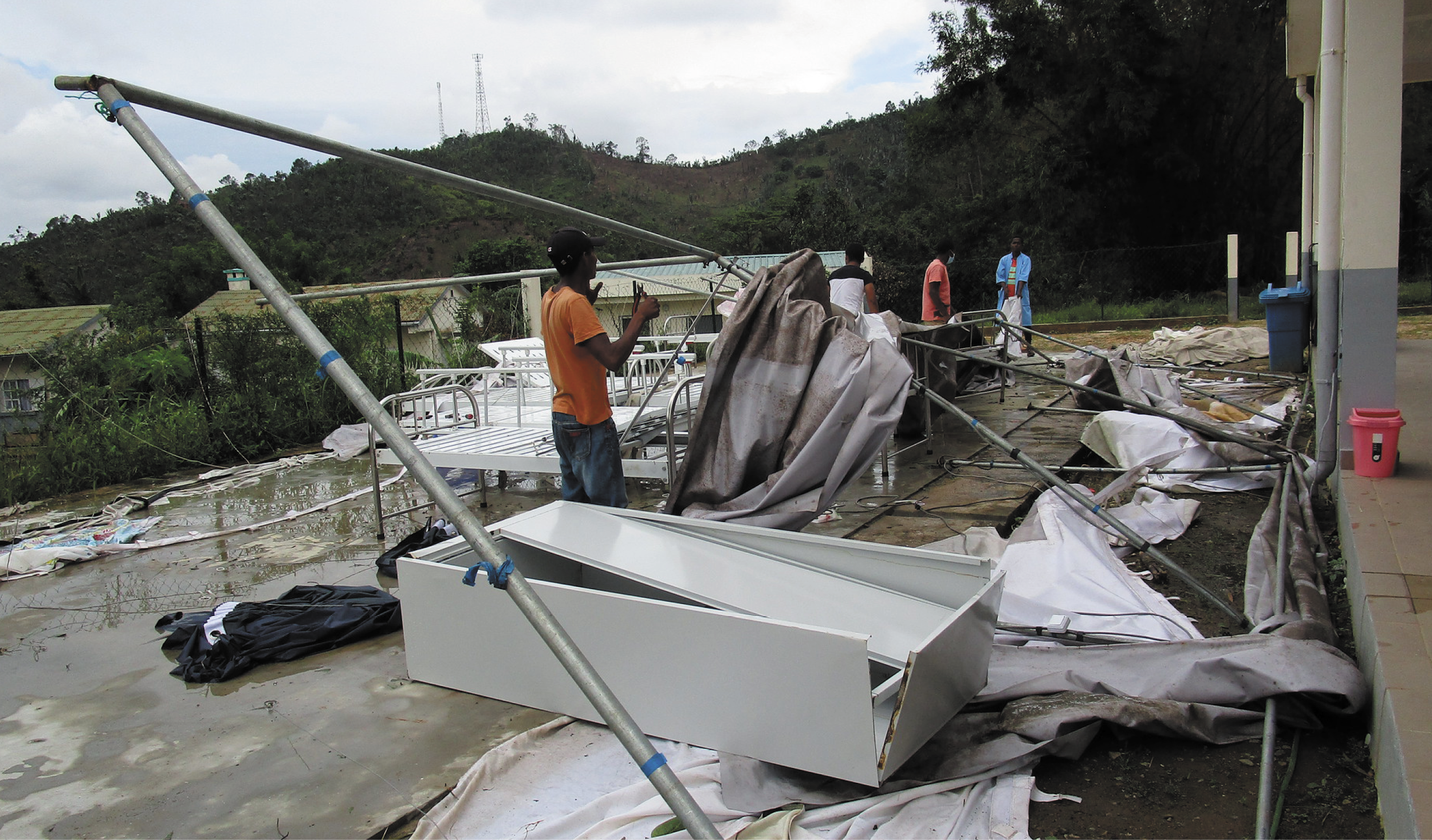16 Feb Cyclone response continues as teams prepare for another potential storm
In the ten days since Cyclone Batsirai made landfall on the eastern coast of Madagascar, the national death toll has climbed above 100 and the total number of people displaced has surpassed 250,000 – about 1% of the country’s population.
The eye of the storm passed directly through northern Ifanadiana District on the weekend of February 5-6, destroying 90% of the crops that constitute the population’s livelihood, both to feed their families and to sell for income. So far, one death has been confirmed in the district as a direct result of Cyclone Batsirai. We are seeing a post-cyclone surge in malaria cases in one commune so far, and are collaborating closely with the district health office to ensure curative and preventive measures are put in place; we will continue preventive measures for other outbreaks such as cholera and COVID-19.
We have teamed up with the district health office to assess every health facility in the district. Having reached 13 of the district’s 21 health facilities so far, major damage assessments include:
-
-
- Three health centers sustained 50%-75% overall structural damage and two health centers that had their roofs completely torn off. We are collaborating with UNICEF who has committed to providing at least three tents to serve as temporary health structures while infrastructure is repaired and/or replaced.
-
-
-
- One maternal waiting home – a structure that exists at the primary care level to provide lodging for women awaiting labor – was completely destroyed, having been mid-construction when the storm hit.
-
-
-
- Several smaller freestanding structures destroyed, such as health facility showers and toilets.
-
-
-
- We are still in the process of gathering information from community health sites. So far community health workers have reported that 50 out of 108 sites have been partially damaged and 3 completely destroyed.
-
The Pivot team has been working tirelessly alongside local officials to respond to the district’s needs. The region’s top three priorities are 1) road access and communication, 2) food security, and 3) infrastructure for essential government functions.
Key elements of our response efforts over the past week:
-
-
- Providing support to the 2,670 (and counting) people in Ifanadiana District displaced by the storm through the distribution of emergency kits. So far that has included over 1,000 kits containing bulk food staples and 750 with hygiene and disease prevention essentials, such as soap and bed nets.
-
-
-
- Mobilizing the community to clear debris from dozens of blocked roadways through a food for work initiative, effectively restoring the routes to at least six primary care health centers that the storm left inaccessible. One of the most challenging aspects of this response is bridge reconstruction, for which Pivot is supporting community-led efforts underway in several parts of the district; further support from the Ministry of Public Works will be needed.
-
-
-
- Organizing mobile clinics across emergency lodging centers in remote parts of the district to see patients, provide basic care, and refer patients to facilities as needed. Pivot also supported the mobile caravan clinic organized by the Ministry of Public Health (MOPH), donating funds and supplies and joining the caravan team in its travels along the national route to provide care for patients in the affected regions.
-
-
-
- Restoring communication lines in the district’s rural and/or still-inaccessible areas, and dispatching members of the PIvot IT team to the villages to villages where phone connections between facilities were lost.
-
-
-
- Medicines and supplies were destroyed due to major flooding across the district, including at the district health office’s central warehouse, Pivot’s storage facilities, and several public pharmacies. This triggered emergency procurement efforts to restock all health centers essential medicines and consumables, starting with facilities facing the greatest loss of stock.
-
-
-
- We know of at least one patient whose geographic situation, complicated by the storm’s destruction, was the only thing standing in the way of accessing lifesaving care. In the initial aftermath of the storm, we found solutions to support referrals through relayed transport. Today, as most health facilities are accessible once again, ambulances are functioning, and we are back to supporting community referrals on foot.
-
-
-
- Electricity has yet to be restored in the majority of the district, including the commune of Ifanadiana, where the District Hospital is located. Since the storm, the hospital has been running essential equipment on power provided by a generator, for which Pivot is providing fuel.
-
-
-
- With our fleet of vehicles entirely dispatched to support road-clearing and kit distribution, we’ve rented 11 additional motorbikes in order to maximize our mobility throughout the district and nimbly respond to requests for support wherever else we are needed most.
-
Beyond Ifanadiana District, the Pivot team is also making field visits to the neighboring region of Fitovinany, where the district of Ikongo bore the majority of the nation’s death toll. Meeting with the district health officer and local authorities, we found that most of the district’s rivers remain at levels too high to cross, meaning a large portion of the population cannot yet be reached with emergency supplies from any organization. In an initial phase of response, Pivot provided food and hygiene kits to hospitalized patients, families who lost their homes, and prisoners who have been displaced. We will continue efforts in collaboration with their district health office to support the urgent need for sanitation and outbreak prevention supplies.
We extend our deepest thanks to those of you who have contributed to our Emergency Response Fund, which has enabled us to respond quickly to the evolving situation on the ground. The road to recovery remains long, but, with your help, we intend to support the district’s plans to build back better in preparation for the storms to come. Cyclone season typically lasts through April, and more intense weather is predicted for the Vatovavy region in the coming weeks – something we think of as a new normal given the impact of climate change on Madagascar).
As our teams on the ground prepare for the next storm, we ask that you please keep Madagascar in your thoughts. Thank you for your partnership.
Correction (
An earlier version of this post misstated the percentage of Madagascar’s population displaced by Cyclone Batsirai. It was 1%, not 10%.
